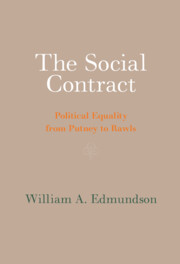Refine search
Actions for selected content:
265 results
Case 21
-
- Book:
- Debating Papal History, c. 250–c. 1300
- Published online:
- 03 November 2025
- Print publication:
- 20 November 2025, pp 197-212
-
- Chapter
- Export citation
Consent to Jurisdiction Under the Brussels I Regulation and the 2005 Choice of Court Convention
-
- Journal:
- German Law Journal / Volume 26 / Issue 5 / June 2025
- Published online by Cambridge University Press:
- 05 November 2025, pp. 889-903
-
- Article
-
- You have access
- Open access
- HTML
- Export citation
Consent and Dispute Resolution Clauses
-
- Journal:
- German Law Journal / Volume 26 / Issue 5 / June 2025
- Published online by Cambridge University Press:
- 05 November 2025, pp. 734-747
-
- Article
-
- You have access
- Open access
- HTML
- Export citation
Towards a Coherent Regulation of Dispute Resolution Agreements?
-
- Journal:
- German Law Journal / Volume 26 / Issue 5 / June 2025
- Published online by Cambridge University Press:
- 05 November 2025, pp. 949-978
-
- Article
-
- You have access
- Open access
- HTML
- Export citation
2 - Explaining the Relationship between Culture and Politics
-
- Book:
- Pious Politics
- Published online:
- 21 October 2025
- Print publication:
- 30 October 2025, pp 32-48
-
- Chapter
- Export citation
Chapter 6 - Law in Relation to Children and Young People
-
-
- Book:
- Seminars in Child and Adolescent Psychiatry
- Published online:
- 10 October 2025
- Print publication:
- 30 October 2025, pp 81-95
-
- Chapter
- Export citation
Conclusion
-
- Book:
- The Recognition of Sovereignty
- Published online:
- 09 October 2025
- Print publication:
- 23 October 2025, pp 330-344
-
- Chapter
- Export citation
3 - Big Participant Samples
-
- Book:
- Big Data in the Psychological Sciences
- Published online:
- 23 October 2025
- Print publication:
- 23 October 2025, pp 31-51
-
- Chapter
- Export citation

Manufacturing Dissent
- American Modernism and the Science of Belief
-
- Published online:
- 03 October 2025
- Print publication:
- 21 August 2025
Making Something Out of “Much Ado About Nothing”
- Part of
-
- Journal:
- Public Humanities / Volume 1 / 2025
- Published online by Cambridge University Press:
- 23 September 2025, e138
-
- Article
-
- You have access
- Open access
- HTML
- Export citation
Chapter 8 - Hume’s Critique
-
- Book:
- The Social Contract
- Published online:
- 30 May 2025
- Print publication:
- 04 September 2025, pp 94-104
-
- Chapter
- Export citation
Lucretia (and Lucia) and the Medieval Canonists: Guilt, Consent, and Chastity in the Early Canonistic Jurisprudence of Rape: Submission for Law and History Review
-
- Journal:
- Law and History Review , First View
- Published online by Cambridge University Press:
- 02 September 2025, pp. 1-25
-
- Article
-
- You have access
- Open access
- HTML
- Export citation
Partial waiver of consent to overcome translational science barriers in neonatal clinical research
-
- Journal:
- Journal of Clinical and Translational Science / Volume 9 / Issue 1 / 2025
- Published online by Cambridge University Press:
- 27 August 2025, e202
-
- Article
-
- You have access
- Open access
- HTML
- Export citation
Notice, Consent, and Choice-of-Jurisdiction Clauses in the United States
-
- Journal:
- German Law Journal / Volume 26 / Issue 5 / June 2025
- Published online by Cambridge University Press:
- 30 July 2025, pp. 862-875
-
- Article
-
- You have access
- Open access
- HTML
- Export citation
22 - Toward a More Just International Law
- from Part VI - Criticism and Reconstruction of the Legitimacy of International Law
-
- Book:
- The Law and Politics of International Legitimacy
- Published online:
- 14 July 2025
- Print publication:
- 24 July 2025, pp 413-461
-
- Chapter
- Export citation
5 - Political Legitimacy as Evaluation and Judgment
- from Part II - Political Legitimacy and Theory of Politics
-
- Book:
- The Law and Politics of International Legitimacy
- Published online:
- 14 July 2025
- Print publication:
- 24 July 2025, pp 68-91
-
- Chapter
- Export citation
Differences in electrode placements between consensual and nonconsensual electroconvulsive therapy: retrospective chart review study
-
- Journal:
- BJPsych Open / Volume 11 / Issue 4 / July 2025
- Published online by Cambridge University Press:
- 25 June 2025, e126
-
- Article
-
- You have access
- Open access
- HTML
- Export citation
28 - Commonsense Consent and Action Representation
- from Part III - Applications
-
-
- Book:
- The Cambridge Handbook of Experimental Jurisprudence
- Published online:
- 17 May 2025
- Print publication:
- 05 June 2025, pp 464-480
-
- Chapter
- Export citation

The Social Contract
- Political Equality from Putney to Rawls
-
- Published online:
- 30 May 2025
- Print publication:
- 04 September 2025
11 - Constitutional Legitimacy
- from Part II - Modalities
-
-
- Book:
- The Cambridge Handbook of Constitutional Theory
- Published online:
- 27 March 2025
- Print publication:
- 24 April 2025, pp 176-191
-
- Chapter
- Export citation
